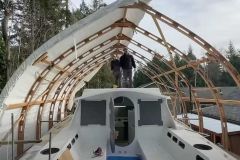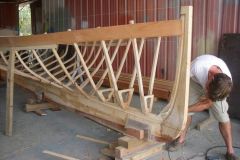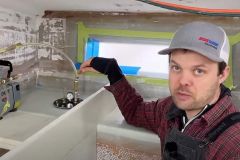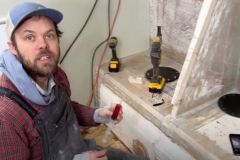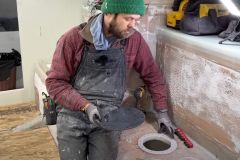Drawer cushioning
After fixing the main elements of his workbench in the last episode, Matt tackles the details of the tool storage and makes his first drawers. He starts tracing the elements with a laser level, which is very useful to keep aligned on several sides when tracing. He cuts out the different elements of each drawer and checks the wedges. He anticipates interactions with the rest of the layout, such as the cabin door frame, by adding a spacer.
For the assembly, Matt uses cyanolite glue and a spray to make it dry instantly.
Protection of the edges of the composite
For composite furniture to be durable, Matt wants to protect the edges where the core foam is exposed. There are several methods, from glass cloth on a rounded fillet to wood beading. He'll test two more in today's episodes. The first is to glue strips of glass cloth already laminated. But this one adding thickness, he adopts a second method for the drawer sides. After milling a thickness of foam, the edge is filled with filled epoxy.
Painting and filling
At the same time, Matt takes advantage of the presence of friends to carry out various small jobs. He paints and plasters the interior of the Duracell bathroom. He fills in the holes in the deck left by the old chainplates. Finally, to protect the transom extension made the previous fall from UV rays, he decided to remove the tear cloth and apply an epoxy primer.





